How to check CPU usage in Windows 11
How to check my computer's CPU usage?
All major components in a computer rely on the CPU to function. If you notice slow performance, check CPU usage through 1 of 3 main tools available in Windows system 11: Task Manager, Resource Monitor and Performance Monitor.
Use Task Manager to check CPU usage
The Task Manager provides an overview of the currently running applications and processes and the amount of hardware each application uses, specifically the CPU. The Task Manager's functionality is pretty simple, but still handy if you want a basic idea of what's going on.
1. Start by pressing CTRL + Shift + Esc on your keyboard.
2. In the following window, click Task Manager.

3. While in the Task Manager, click the Performance tab.
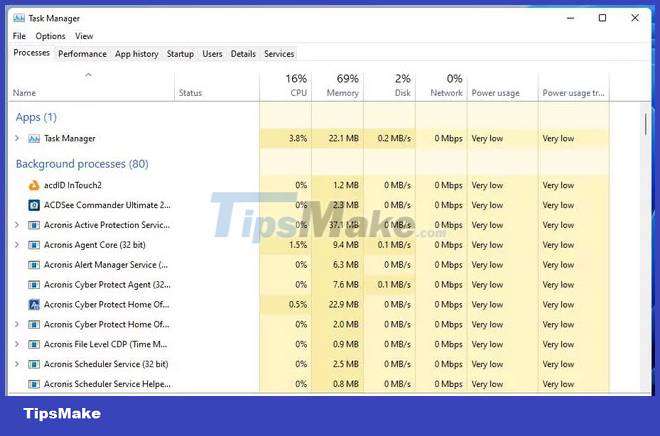
4. Here, in the Performance tab, you can see how much CPU your computer is currently using.

5. If you want to see which apps are using the most CPU, go back to the Processes tab.
6. You can free up resources by right-clicking on the item that takes up the most resources and selecting End task.
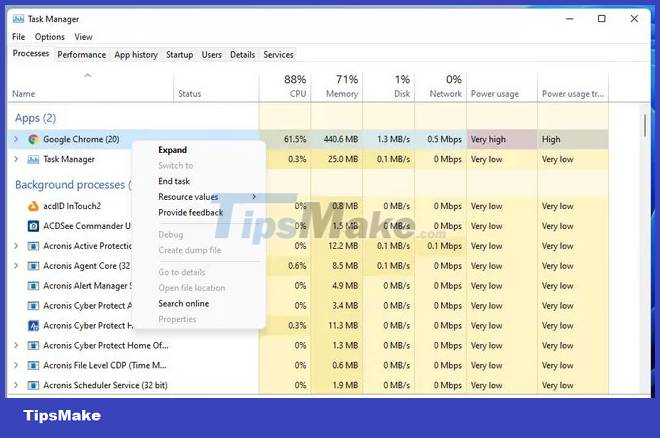
Use Resource Monitor to check CPU usage
Resource Monitor is similar to Task Manager but provides more information by explaining how your applications are using CPU. Use it to help decide how to improve your application's performance.
1. In the search bar, type Resource Monitor and select the item that appears at the top.
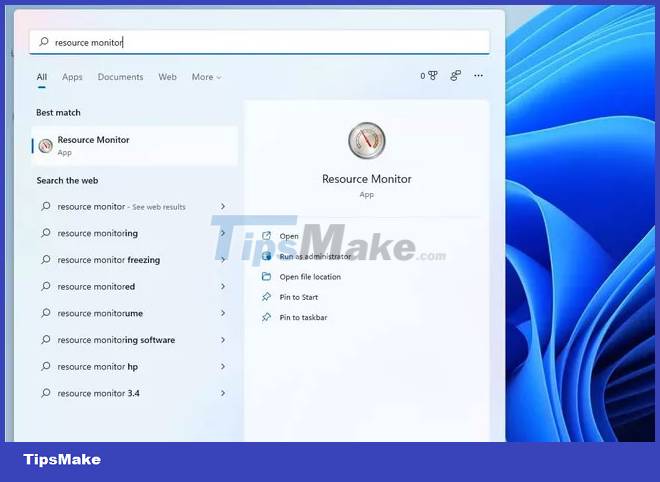
2. Resource Monitor will open the Overview tab showing system information.
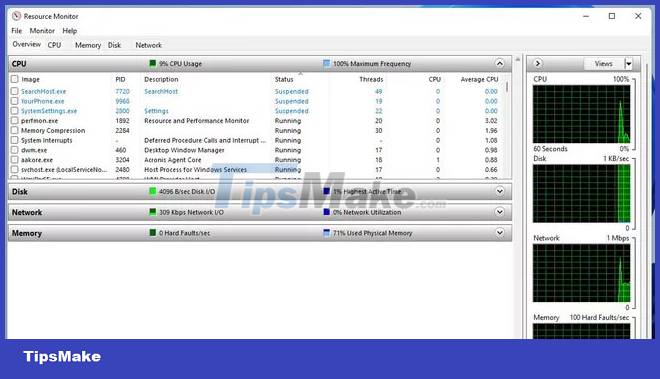
3. Click the CPU tab to see processor usage. It also shows the available CPU level and what is running.

4. If you right click on an item, you will be able to search information about that item online with Search Online or end the item with End Process.
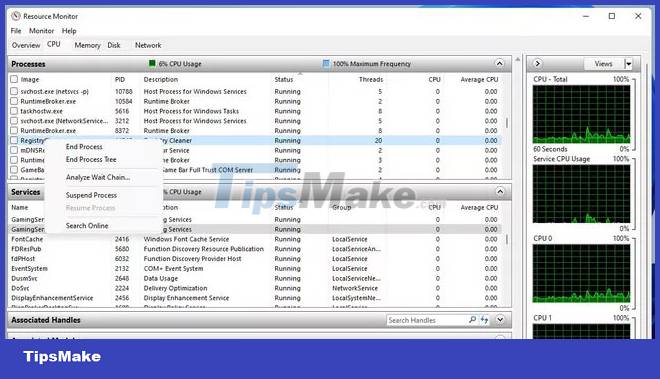
Use Performance Monitor to check CPU usage
Performance Monitor is a tool that allows you to study how applications are performing in real time or by collecting data to use for later analysis. With this tool, you can find out which apps are behaving abnormally and possibly the cause.
1. Open the search bar and type Performance Monitor.
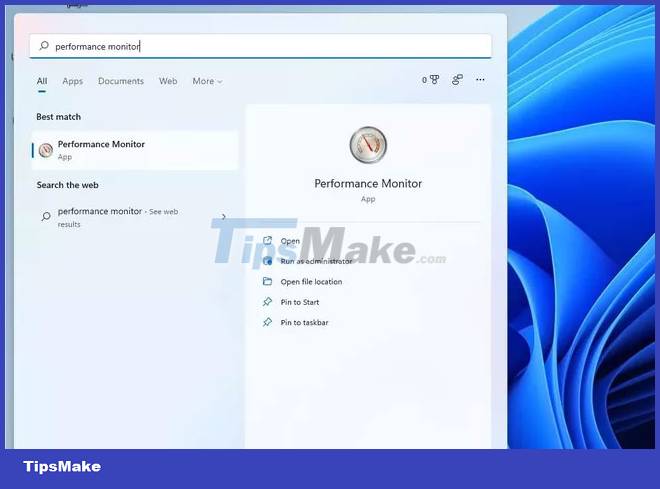
2. Click the first item and the application will open to System Summary.

3. If you click on the Performance Monitor tab, you will see the CPU activity in real time.
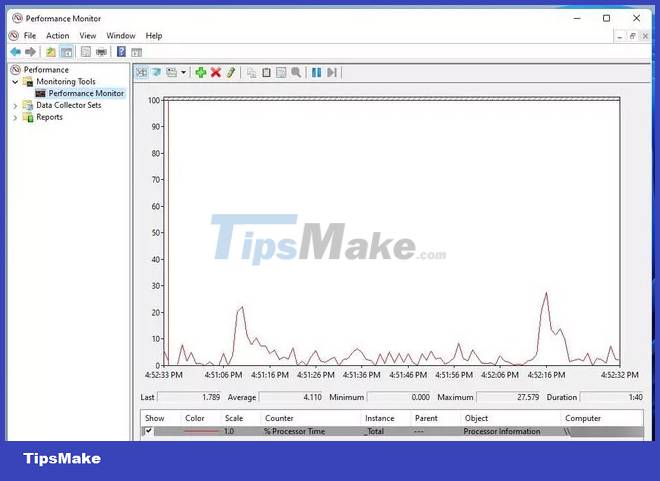
4. If you want to add a counter to monitor the application's performance, click the green Add button.
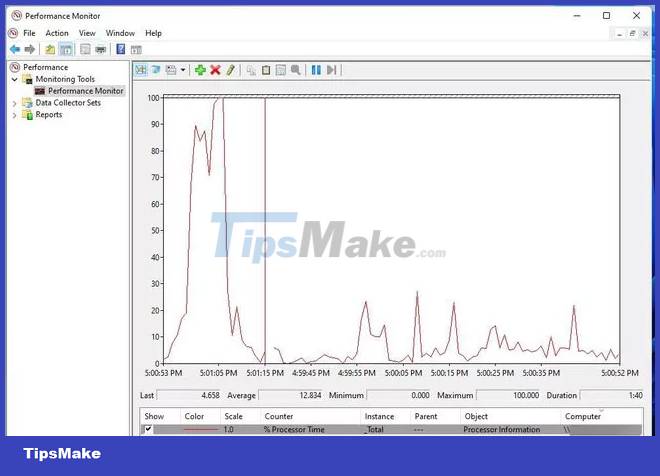
5. In this window, you can add another counter by locating the application in the list on the left under Select counter from computer.

6. Once found, select it and click the Add button at the bottom.
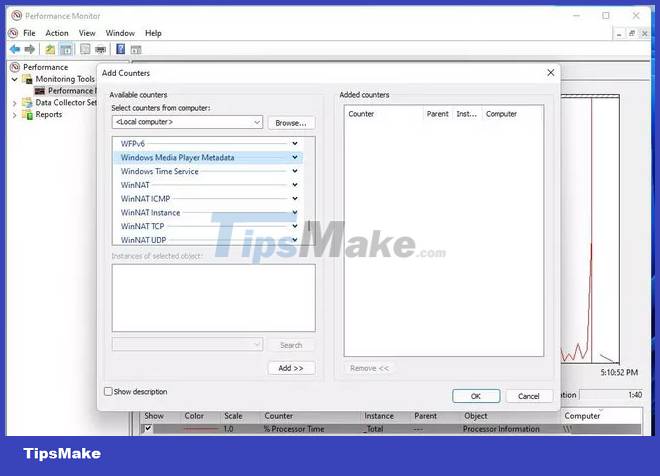
7. The entry will appear on the right. Select the OK button and it will appear in Performance Monitor.
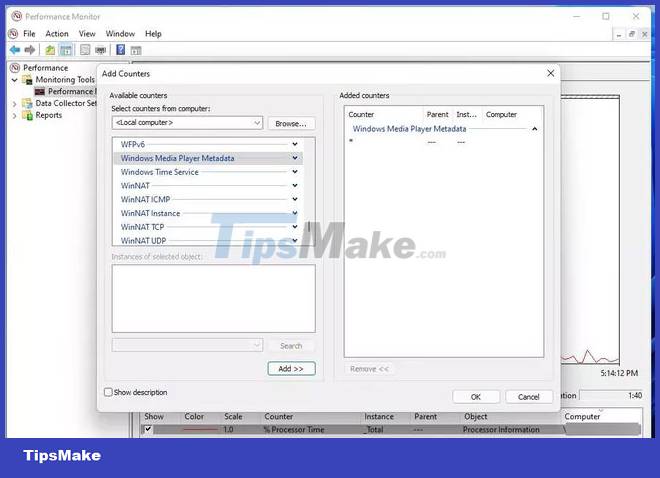
8. Each added counter will have its own corresponding color to distinguish.
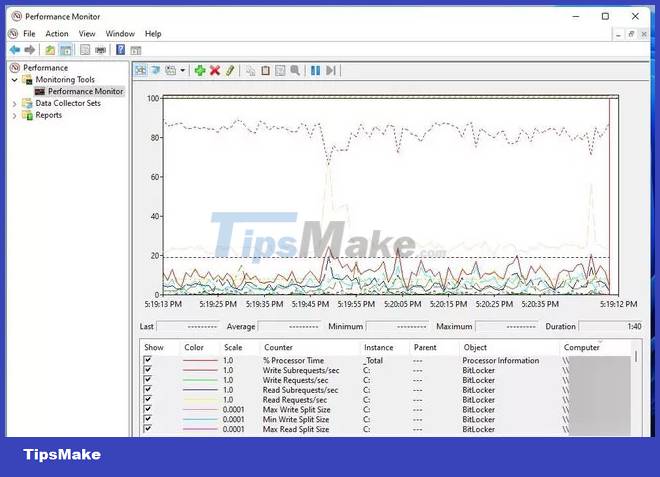
Does Windows 11 use more CPU than usual?
Windows 11 is well optimized, so by itself it doesn't take up a lot of CPU resources. However, that does not mean that the applications you are using are optimized.
High CPU consumption in Windows 11 computers can be caused by pending updates, anti-virus software preventing certain activities, faulty settings or poorly optimized applications. For example, Google Chrome is known to be a very resource-intensive application, and opening enough tabs can cause performance issues.
Performance issues are a sign of high CPU usage. High CPU usage can cause apps to slow down or even hang. And of course, heavy CPU usage can overheat the computer and cause the cooling fan to make a rather loud hum.
You should read it
- How to Check Data Usage on AT&T
- How to view network-based applications on Windows 10
- How to manage battery usage for each application on Windows 10
- Monitor Internet data usage on Windows 10
- How to view the application's energy usage with Task Manager on Windows 10
- Steps to view logs and usage history of windows 10 computers
- 7 extremely interesting Wifi features on Windows 10 not everyone knows
- 8 unexpected uses of Task Manager
May be interested
- How to Check Cellular Data Usage on iPhone
 this article shows you how to view the mobile data used on your iphone since the last time you reset the data statistics.
this article shows you how to view the mobile data used on your iphone since the last time you reset the data statistics. - Steps to view logs and usage history of windows 10 computers
 to view the history of turning on and off the computer, you will need to rely on the log keys to check. the operation to open and view the log lock on a windows computer is as follows:
to view the history of turning on and off the computer, you will need to rely on the log keys to check. the operation to open and view the log lock on a windows computer is as follows: - How to check and monitor RAM status on Windows 10
 the computer shows signs of performance loss, or has a blue screen error, then there may be a problem with ram. you need to check and monitor how the status of the ram is.
the computer shows signs of performance loss, or has a blue screen error, then there may be a problem with ram. you need to check and monitor how the status of the ram is. - How to check RAM, GPU and CPU usage in Windows 11
 monitoring system resources can be very important, especially when problems occur or the machine runs slowly.
monitoring system resources can be very important, especially when problems occur or the machine runs slowly. - How to monitor Internet data usage on Windows
 although internet data usage on pcs is not as common as mobile phones, that doesn't mean you don't need to care about it. below, we will show you how to reset data usage records in windows 10.
although internet data usage on pcs is not as common as mobile phones, that doesn't mean you don't need to care about it. below, we will show you how to reset data usage records in windows 10. - How to reduce the high CPU usage of Game DVR in Windows 10
 if game dvr is using too much cpu, it is easy to fix this problem. follow the steps below to troubleshoot high cpu usage when game dvr is enabled in windows 10.
if game dvr is using too much cpu, it is easy to fix this problem. follow the steps below to troubleshoot high cpu usage when game dvr is enabled in windows 10. - Check your machine configuration with CPU-Z in the most detailed way
 the article below introduces readers to cpu - z utilities and instructions for free download and the simplest usage.
the article below introduces readers to cpu - z utilities and instructions for free download and the simplest usage. - How to fix high CPU usage Windows Widgets
 if you have researched and found that the root of the problem lies in windows widgets, you may be curious to know the reason behind it and how to fix it.
if you have researched and found that the root of the problem lies in windows widgets, you may be curious to know the reason behind it and how to fix it. - How to create a battery usage chart on Windows 10
 windows 10 supports a small but quite useful feature that helps you know the status of your laptop battery continuously over time, which is to create a battery usage graph.
windows 10 supports a small but quite useful feature that helps you know the status of your laptop battery continuously over time, which is to create a battery usage graph. - Monitor Internet data usage on Windows 10
 while using internet data on a pc is not as popular as a mobile phone, it doesn't mean you don't need to care about it. below, we will show you how to reset the data usage record in windows 10.
while using internet data on a pc is not as popular as a mobile phone, it doesn't mean you don't need to care about it. below, we will show you how to reset the data usage record in windows 10.










 10 interesting hidden features of Windows 11
10 interesting hidden features of Windows 11 These are the features that are about to be brought to Windows 11 by Microsoft
These are the features that are about to be brought to Windows 11 by Microsoft Microsoft is ready to let Windows 11 users install third-party widgets from the Store
Microsoft is ready to let Windows 11 users install third-party widgets from the Store Instructions to change the wallpaper on Windows 11
Instructions to change the wallpaper on Windows 11 Windows 11 will become the first operating system with anti-phishing protection at the kernel level
Windows 11 will become the first operating system with anti-phishing protection at the kernel level Microsoft explains why users can't yet own the taskbar move feature on Windows 11
Microsoft explains why users can't yet own the taskbar move feature on Windows 11